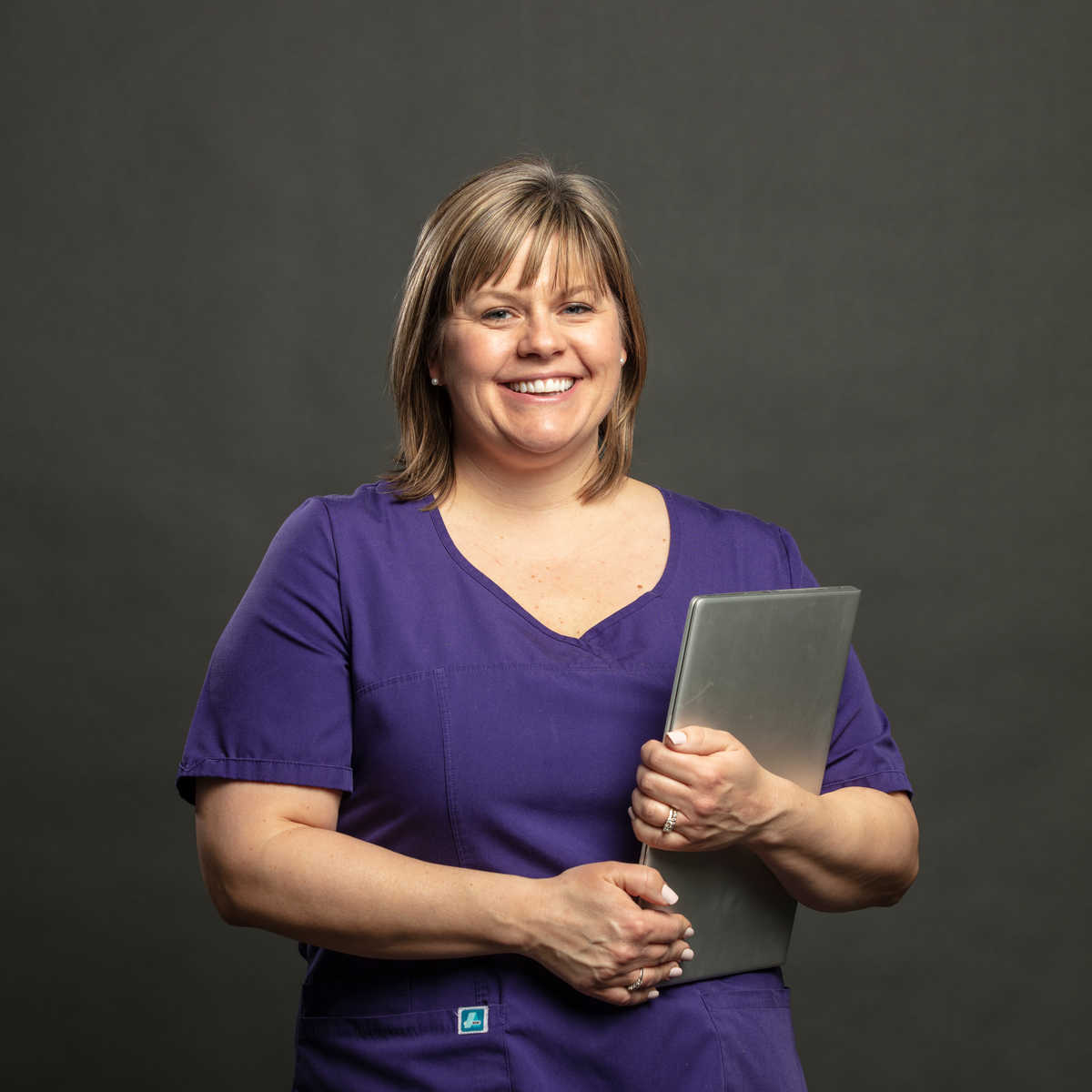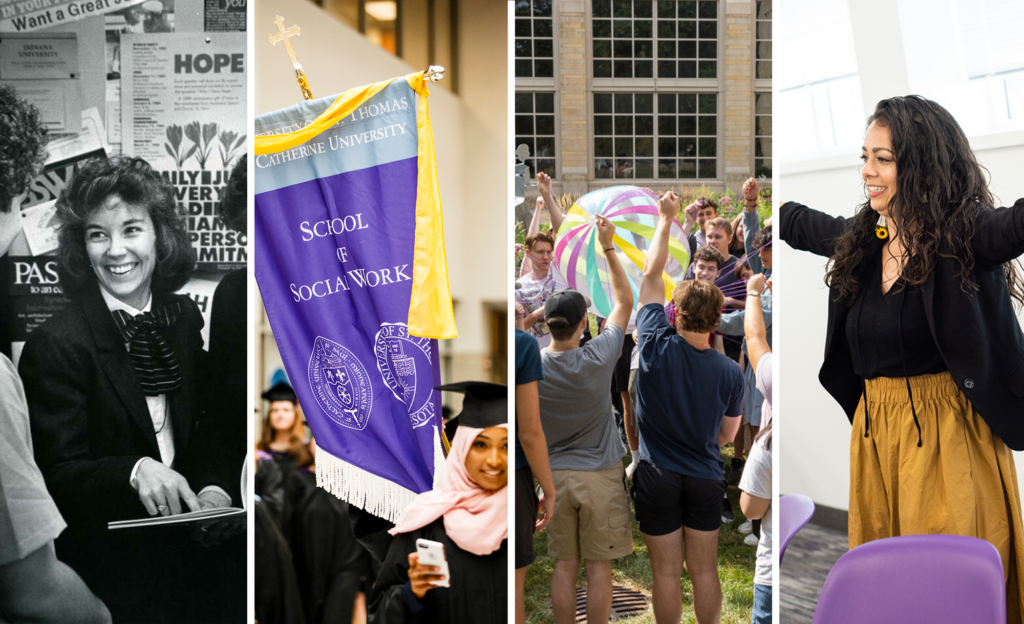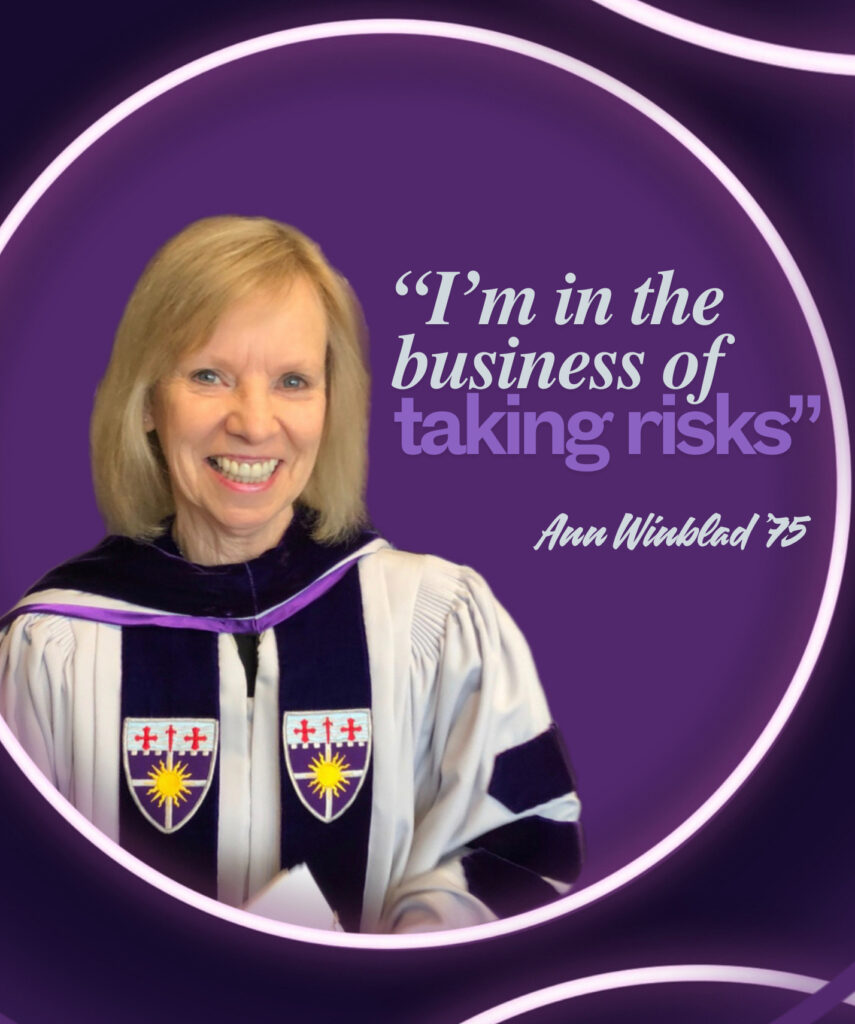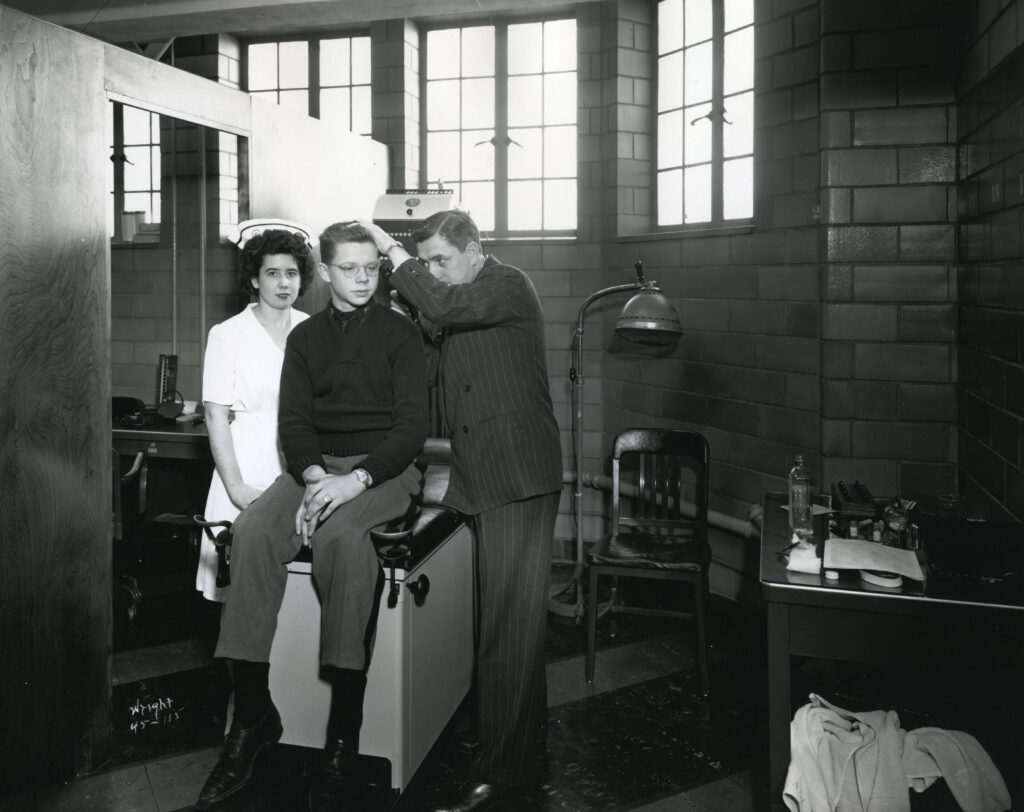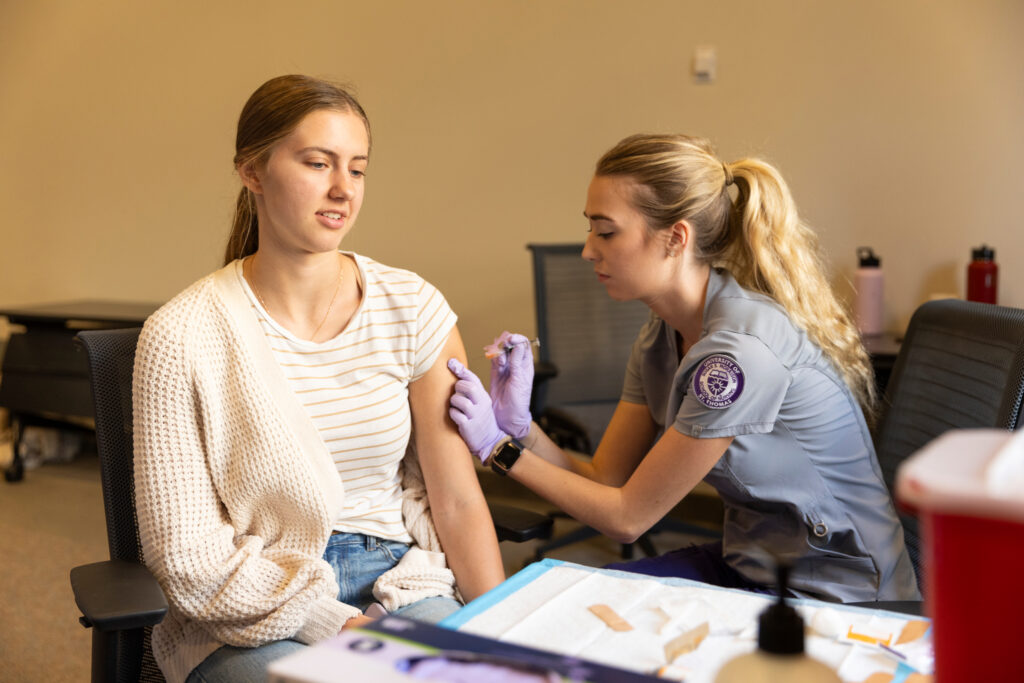At the intersection of care and education is where you’ll find Heather Anderson, who was raised in the small town of Rushford, Minnesota. Hailing from a family of nurses and educators, Anderson knew she wanted to follow one of these community-oriented paths. The question was: which one? Watching the nursing careers of her cousin and aunt with great interest, she realized that nursing offered a wide career path with multiple avenues to make an impact.
Once she decided to pursue her bachelor’s degree in nursing, Anderson said a piece of sage advice from her aunt solidified that she had found her calling.
“She told me that I needed to remember that it wasn’t just taking care of patients, that I was also going to be taking care of families,” Anderson said.
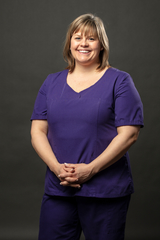
She credits a forward-thinking instructor, however, for helping her realize she could have both paths – health care and education. This professor treated students like future colleagues, because that’s exactly what they were. Anderson said it was during that class that she realized it was possible to merge her passions for nursing and education.
“Being a nurse educator would be the best of both worlds,” said Anderson, who is now clinical faculty member and assistant director of nursing simulation education in the School of Nursing, part of the Morrison Family College of Health at the University of St. Thomas in Minnesota.
To excel as an effective nursing instructor, Anderson first needed experience in the field. She started her nursing career at Regions Hospital, where she knew she would have the chance to work with diverse populations and would be exposed to a wide variety of nursing experiences to expand her knowledge. She quickly developed strong leadership skills and was placed in a preceptor role, overseeing nursing students completing their clinical placements. She rose to charge nurse, taking on supervising duties of the other nurses during her shifts.
“Both of these roles came with a lot of mentoring and coaching, and I really enjoyed that aspect,” said Anderson.
Educator roles within the hospital piqued Anderson’s interest, and she obtained a master’s degree in nursing education and health care leadership. The advanced education helped her earn her first role as an educator in higher ed: a clinical instructor at Inver Hills Community College in Minnesota. She maintained hours at Regions, simultaneously practicing care while also teaching.
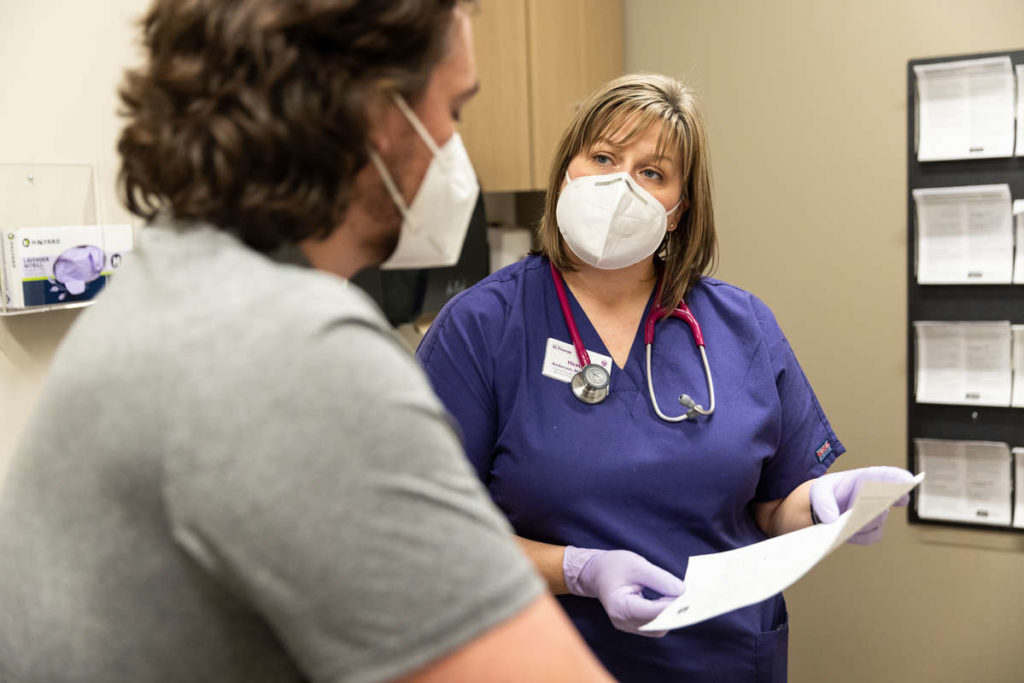 Heather Anderson (r) checks vitals of a student. Photo by Mark Brown.
Heather Anderson (r) checks vitals of a student. Photo by Mark Brown.When a mentor asked Anderson if she might be interested in a position within the simulation program at HealthPartners (the health care provider that includes Regions Hospital), she was at first skeptical of making the move. After all, she was working with real patients every day – she had to weigh that against spending time practicing on high-fidelity mannequins, as sophisticated and lifelike as they may be. She agreed to shadow the program.
“It was mind blowing,” said Anderson. “I had no idea at that point just how much we could be doing with simulation.”
She watched as doctors practiced high-pressure medical scenarios on hyper-realistic mannequins. They performed emergency C-sections, timing and drilling each other on procedures in which the difference of a few seconds could mean life or death. She recalls sweat beading on the doctors’ foreheads as they pushed themselves to do their best work.
“It was amazing – they were so invested,” Anderson said. “That was the tipping point for me. I was so interested in how we could use simulation to help train in lots of different capabilities and areas.”
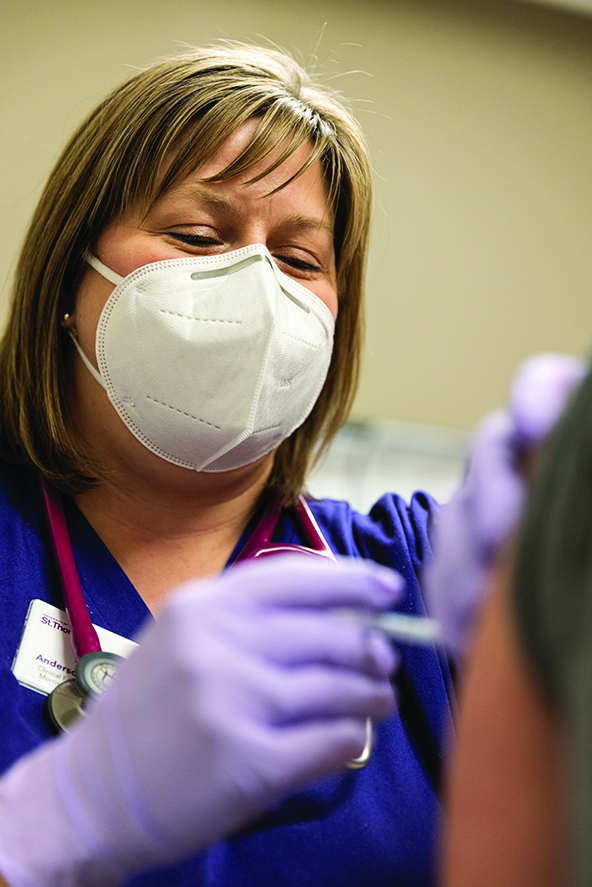
Anderson applied for the simulation educator role and got it. In this role, the benefits of simulation for nursing and medical students became clearer and clearer.
“As a new nurse there are so many situations that you encounter that can be intimidating,” said Anderson. “On top of that, hospitals are very complex. There are many personalities to navigate and different systems to learn, and it can be overwhelming. So having that experience, dealing with some of those really tough situations in a supportive, hands-on environment is incredibly useful.”
Anderson loved the work in the simulation program and eventually became the lead simulation education specialist for HealthPartners. People sometimes ask Anderson if she misses the patient side of nursing, to which she responds that the student and nurse learners she educates have become like her patients.
“You’re taking care of them and making sure that they have the skills and knowledge they need to be successful.”
In her role as the assistant director of nursing simulation education at St. Thomas, Anderson is leveraging all that she learned in a hospital setting to create a brand new simulation curricular design for the first nursing students who will arrive on campus in fall 2022.
Dr. Martha Scheckel, founding director of the School of Nursing, said students will appreciate Anderson's outstanding expertise in state-of-the-art simulation and her ability to bridge academics and practice through simulation to prepare them for entry into nursing practice.
“One of the big reasons I came to St. Thomas is that when I worked with students in simulation education at HealthPartners, I would get to see them for only a couple days,” said Anderson. “I’m so excited to be able to get to know students at St. Thomas and see them along their journey.”
And as she begins her own journey at St. Thomas, Anderson hopes to honor that lasting advice from her aunt – to approach nursing as care for an entire family, not just a single patient.
“I think that really speaks to what our program is trying to do – the concept of the whole person,” Anderson said. “It’s not just a person, it’s their environment, their family, their community that we’re caring for.”
